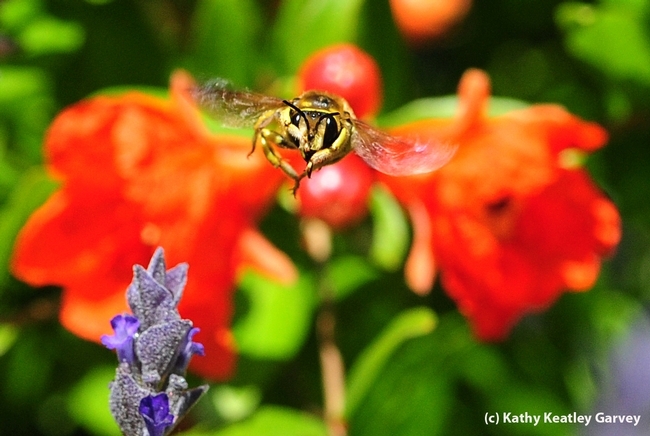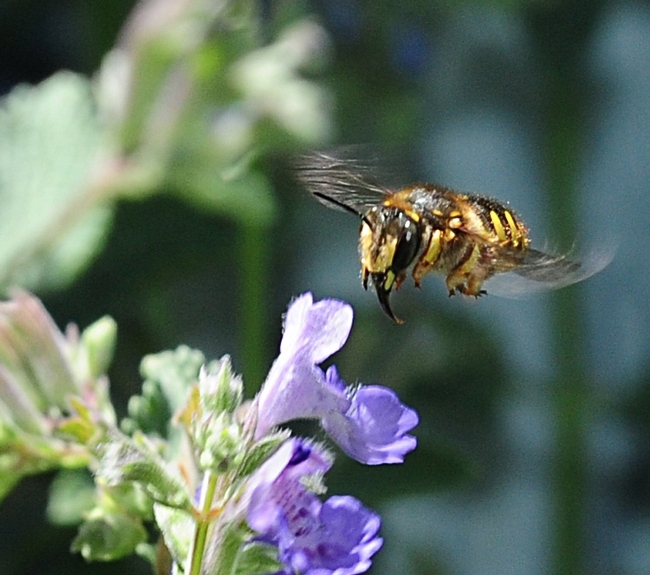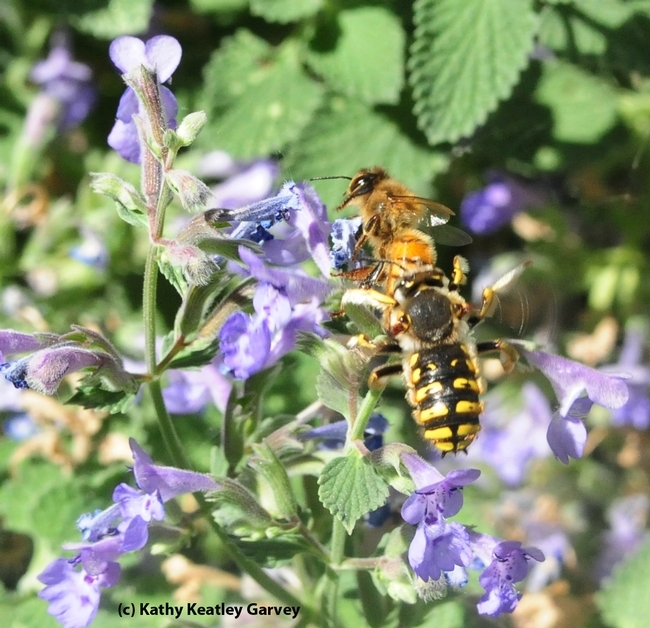She described it to a "T."
That would be "T" for territorial.
Lynn Kimsey, director of the Bohart Museum of Entomology and professor of entomology at UC Davis, spotlighted the European wool carder bee in her current edition of the Bohart Museum Society newsletter.
The males are aggressive. Their territorial behavior is "in your face." They will chase away bees, butterflies and even small birds, like hummingbirds. "They will also check out humans, flying up to them and hovering," Kimsey says.
But it's not something we should be worried about. The wool carder bee is a pollinator.
"We tend to think of all exotic species of insects as being pests," Kimsey wrote. "By and large, that's true but there are exceptions. The wool carder bee, Anthidium manicatum, may be one of these exceptions."
She describes it as a species of European leafcutter bee "that has successfully colonized North America. However, North America isn't the only place these bees have invaded. They are now found in north Africa, South America, Asia, the Canary Islands and even in New Zealand. World domination is ahead."
The wool carder bee (so named because the female scrapes or cards leaf fuzz for her nest) was accidentally introduced into the U.S. from Europe in the early 1960s and was first discovered in New York State. It spread quickly across the continent. Scientists found it in Davis, Calif., in 2007.
They're about the size of a honey bee, Kimsey says "but they are brightly marked with yellow on a black background with a bright yellow face. Only honey bees in Disney movies are black and yellow. Males are considerably larger than females, and have a spine on either side of the last two abdominal segments and three spines on the last segment."
Those spines have been mistaken for stingers, but only females have stingers.
We've seen the males protect patches of lamb's ear, catmint, foxgloves, oregano, cosmos, African blue basil, and Mexican sunflower (Tithonia) in our yard. They mean bees-ness. We've seen honey bees working frantically, trying to forage as quickly as possible without getting targeted. We've also seen some of them crippled on the ground.
The female wool carder bees build their nests, Kimsey says, in rotting wood or preexisting tunnels, such as beetle burrows.
Kimsey mentioned that the Bohart Museum scientist Tom Zavortink experienced female carder bees "carding" wool from his socks!
The Bohart Museum Society newsletter is mailed to its members. The society is a campus and community support organization, and like the Bohart Museum, is dedicated to teaching, research and public service. For more information on the society, including how to join, see this page.
Attached Images:


